
Copyright 2013 by Mendocino Press, Berkeley, California No part of this publication may be reproduced, stored in a retrieval system or transmitted in any form or by any means, electronic, mechanical, photocopying, recording, scanning or otherwise, except as permitted under Sections 107 or 108 of the 1976 United States Copyright Act, without the prior written permission of the Publisher. Requests to the Publisher for permission should be addressed to the Permissions Department, Mendocino Press, 918 Parker St, Suite A-12, Berkeley, CA 94710. Limit of Liability/Disclaimer of Warranty The Publisher and the author make no representations or warranties with respect to the accuracy or completeness of the contents of this work and specifically disclaim all warranties, including without limitation warranties of fitness for a particular purpose. No warranty may be created or extended by sales or promotional materials. The advice and strategies contained herein may not be suitable for every situation. This work is sold with the understanding that the publisher is not engaged in rendering medical, legal or other professional advice or services.
If professional assistance is required, the services of a competent professional person should be sought. Neither the Publisher nor the author shall be liable for damages arising herefrom. The fact that an individual, organization or website is referred to in this work as a citation and/or potential source of further information does not mean that the author or the Publisher endorses the information the individual, organization or website may provide or recommendations they/it may make. Further, readers should be aware that Internet websites listed in this work may have changed or disappeared between when this work was written and when it is read. For general information on our other products and services or to obtain technical support, please contact our Customer Care Department within the U.S. at (510) 253-0500. at (510) 253-0500.
Mendocino Press publishes its books in a variety of electronic and print formats. Some content that appears in print may not be available in electronic books, and vice versa. TRADEMARKS Mendocino Press and the Mendocino Press logo are trademarks or registered trademarks of Callisto Media Inc. and/or its affiliates, in the United States and other countries, and may not be used without written permission. All other trademarks are the property of their respective owners. Mendocino Press is not associated with any product or vendor mentioned in this book.
ISBN Print 978-1-62315-317-5 | eBook 978-1-62315-340-3 Introduction T he Fast Diet is a weight loss plan that is based on the principle of intermittent fastingyou alternate between fasting and eating normal quantities of food. This diet is one of the easiest and most achievable because you eat regularly 5 days out of the week and you fast 2 days, consuming 500 calories for women and 600 calories for men during those fast days. Fasting days can be challenging but doable because there are no restrictions the next day. The Fast Diet is a perfect plan for people who love food but still want to lose weight. There is solid science behind the concept of intermittent fasting for health and weight loss. Fasting can reduce the risk of and diminish the effects of many diseases such as type 2 diabetes, dementia, cardiovascular disease, and obesity.
Many people considering the Fast Diet are concerned about creating meals for fasting days and perhaps cant even picture what 500 to 600 calories look like. This book can alleviate that worry because it contains eighty tempting recipes, which can be used on non-fasting days as well. You will also be able to follow the comprehensive meal plan designed to make your first eight fasting days, in the first month on the plan, easy to organize and follow. When you start planning your own fasting days after that first month, you can use the handy charts at the end of the book that list calories in commonly eaten foods, healthful low-calorie substitutions, and what to order when eating out. This comprehensive guide will make starting and following the Fast Diet straightforward and a genuine pleasure. 
 PART ONE The Fast Diet
PART ONE The Fast Diet 
 CHAPTER ONE What Is the Fast Diet? The Fast Diet, also known as intermittent fasting or the 5:2 diet, is a plan that is based on moderately fasting for two days and eating regularly for five days in the week.
CHAPTER ONE What Is the Fast Diet? The Fast Diet, also known as intermittent fasting or the 5:2 diet, is a plan that is based on moderately fasting for two days and eating regularly for five days in the week.
Fasting moderately means taking in about one-fourth of your usual calorie intake, along with plenty of water. This diet first appeared in the United Kingdom in 2012 as the brain child of Dr. Michael Mosley, who lost 20 pounds when following the 5:2 combination of intermittent fasting. His success, combined with supporting data about the benefits of this type of modified fasting, produced a flurry of followers who now swear by the Fast Diet for weight loss and other health goals. The Fast Diet has created some positive buzz because, unlike other diet plans, it is relatively easy to commit to long term. Many diets can be boring, with lots of restrictions and almost constant deprivation of some food groups such as carbohydrates or saturated fat.
But with the Fast Diet, you eat regularly most of the time, so there is no tedium! You do not need a spreadsheet to follow the Fast Diet because it is very simple. The basic guidelines are: You will have five regular eating days and two days of fasting each week. On regular days, you can eat anything you want, but it is recommended that you keep your calories at around 2,000 per day (women) to 2,600 per day (men) and consume very little junk or processed foods. On fast days, you consume only 500 calories if you are a woman and 600 calories if you are a man. These calories should be obtained from nutrition-packed foods. There are no rules, so it is your choice if you want to eat a handful of cookies to make up the calories.
For the best results, you should try to consume a limited amount of saturated fat and few simple carbohydrates on fast days. You choose which nonconsecutive days are your fast days during the week, depending on your schedule. On fast days, you can spread your calories over the day whichever way you want (eating three small meals, having a big breakfast, or simply grazing), as long as the calories do not go over your allotment. THE SCIENCE BEHIND THE FAST DIET AND ITS HEALTH BENEFITS Fasting is not a new concept. It has been practiced in many cultures for millennia for spiritual and health reasons. More recently, the health aspects of intermittent fasting became quite clear as researchers delved into the effect of short-term calorie restriction on the body.
They found that you can expect some positive multisystem changes in your body when following the Fast Diet beyond the expected weight loss. For example, improvements to aspects of the cardiovascular system have been documented by doctors studying people observing fasting during Ramadan. While fasting, these people showed a reduction of cholesterol in the blood and improved blood pressure. (Nematy 2012) Other studies have documented improved blood sugar levels, increased longevity, and a reduced risk of heart disease, diabetes, and neurological diseases. (Brown 2013) The Fast Diet has gained some well-regarded advocates since its inception, because although there have not been many scientific studies conducted with humans, the animal studies are compelling. The root of the diets success can be traced back to the effect that intermittent fasting has on the genes.

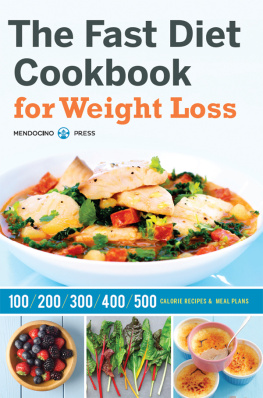





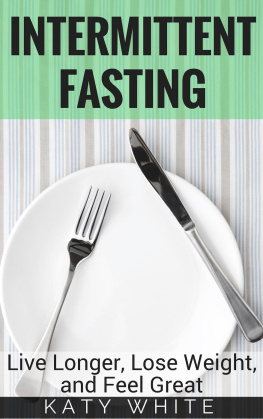


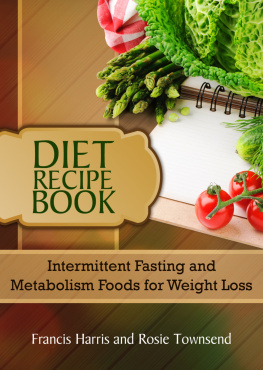




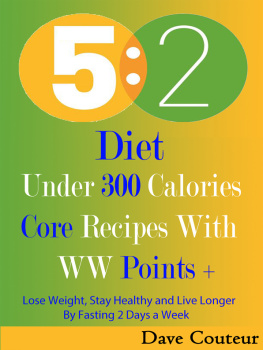
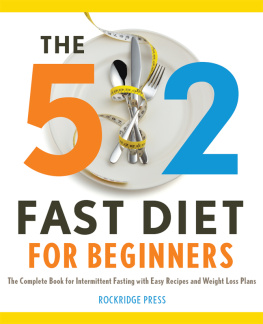



 PART ONE The Fast Diet
PART ONE The Fast Diet 